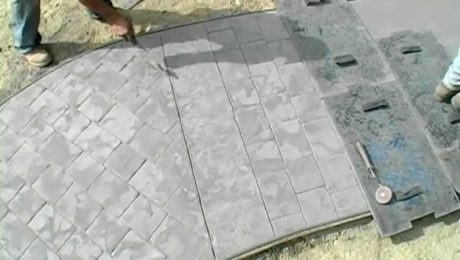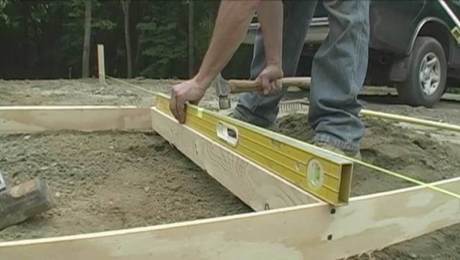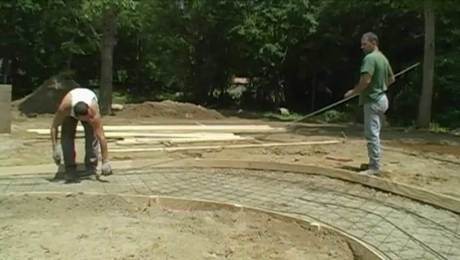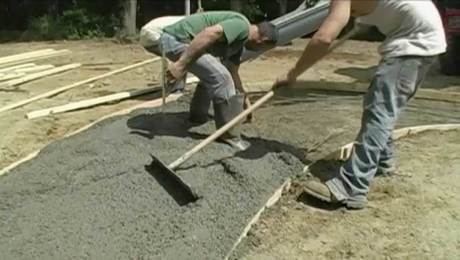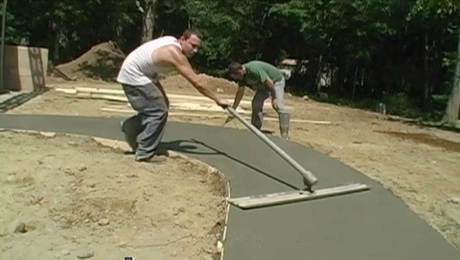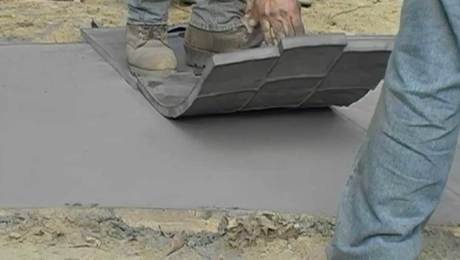Build a Concrete Walkway: Pouring Concrete
Weather conditions, available help, and type of concrete mix are all important factors for a successful pour.
Video Transcript:
Having a few people on hand to pour cement can make any job easier. There’s a limited amount of time, open time, during which the concrete can be poured, smoothed, and stamped. Eventually, the concrete will become too hard to work. The warmer the temperature, the shorter the open time.
Temperatures in the high 70s and 80s give you minutes to go from one process to the next. For cooler temperatures, especially below 65°F, you can have an extra hour or two of wait time on the same job. If you have no choice and must pour on a hot day, make sure you have plenty of help. Ideally, it’s nice to pour on a cool, cloudy day.
The primary person responsible for getting the concrete flat is the screed-board operator. The screed can be a 2×4 board long enough to span the formboards on each side of the walkway. By first flattening the concrete with a float, then drawing the screed over the surface at a slight back angle, it takes only a few seconds to create a reasonably flat surface. For now, the goal is to create a relatively flat surface without pocks or divots.
It’s a good idea to have one or two people with concrete rakes, also known as come-alongs, to assist. Their job is to feed or remove just the right amount of concrete for the screeder. There should be enough concrete in front of the screed so that there are no gaps when it is pulled across the surface, but not so much concrete that it makes it hard to pull the screed.
As the team works along, the wire in the rebar must be lifted off the ground into the middle of the concrete, where it can add the most strength. You can also use chairs to lift the rebar into position.
A typical mix for sidewalks, pads, and patios is a 3000-psi mix with aggregate between 1/4 in. and 3/8 in. To make the concrete more workable, you may have to ask the driver to mix in a little more water.
It’s helpful to have a fourth person to direct traffic, hand people tools, maintain quality control, and do the little stuff that lets everyone else do their jobs.

